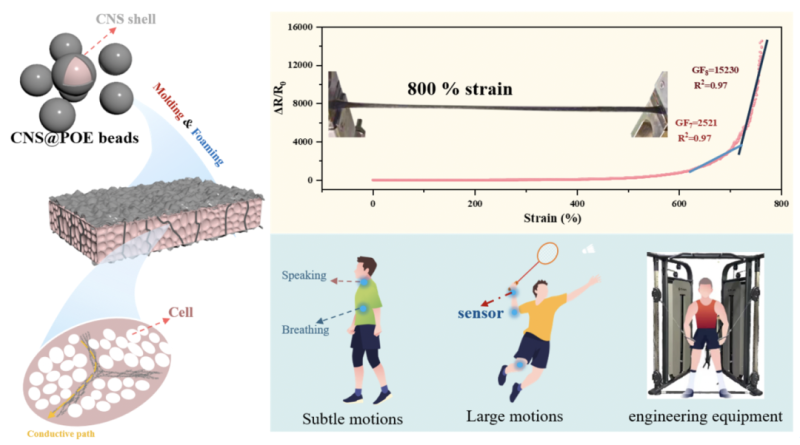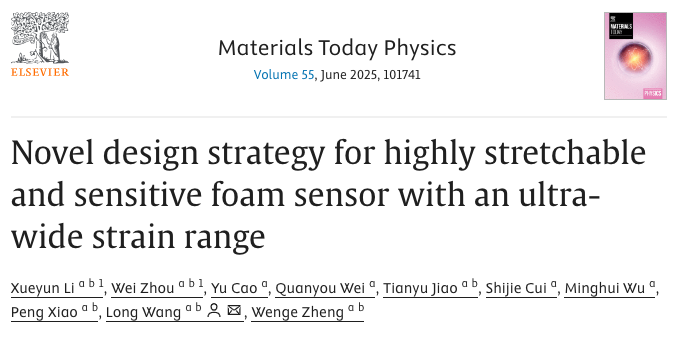Prof. WANG Long and coworkers at the Ningbo Institute of Materials Technology and Engineering (NIMTE) of the Chinese Academy of Sciences (CAS) have developed a highly stretchable and conductive foam sensor with ultra-wide work range via supercritical CO2 (scCO2) foaming.
The study was published in Materials Today Physics.
Piezoresistive strain sensors use conductive elastomeric composite foams to detect movement or touch. Thanks to their light weight, high compressibility, and response stability, these sensors show great prospects for motion tracking, health monitoring, human-robot interaction, and robotics applications.
Porous conductive materials promise ideal flexible electronics. However, electrical failure or material damage during stretching limits their strain response range.
To address this issue, researchers at NIMTE introduced a porous structure in a segregated composite consisting of high aspect ratio carbon nanostructure (CNS) and flexible polyolefin elastomer (POE). The conductive network structure was reconstructed via scCO2 foaming, achieving porous conductive materials with an ultra-wide strain response range.
The developed POE/CNS foam demonstrates superior stretchability (952.5% strain), elasticity (residual strain of 13.8%), and electrical conductivity (resistance of 50 kΩ).
The segregated structure endows the developed POE/CNS foam sensor with an ultra-wide strain response range from 0.5% to 762%, significantly outperforming randomly distributed structures.
Beyond high sensitivity, rapid response, and outstanding reproducibility, the POE/CNS foam sensor maintains stable performance over 4,000 tensile cycles, demonstrating exceptional long-term durability.
This work delivers a facile and eco-friendly approach to producing high-performance polymer-based foam sensors, which shows promising application potential for wearable electronics and engineering equipment.

Fig.1 The POE/CNS foam sensor with segregated structure (Image by NIMTE)






 Lu public network security: 37140202000173
Lu public network security: 37140202000173



